SWPBS Bullying Prevention
Wellbeing Update

SWPBS Bullying Prevention
Wellbeing Update
You will have seen updates here and there across the year about our School Wide Positive Behaviour Support (SWPBS) framework. Each week we are explicitly teaching a new behavioural expectation to our students, such as ‘show support for others’ or ‘have device screen visible,’ to help our students be respectful, resilient, and safe learners.
Currently, we are in the middle of teaching our SWPBS bullying prevention lessons. The overall aim of these lessons is to establish a clear and consistent definition of ‘bullying’ and ‘disrespectful behaviour’ and for students to know what to do if they witness bullying or disrespectful behaviour at school.
Lesson 1: Defining bullying, and the difference between bullying and disrespectful behaviour.
In this lesson, teachers and students identify that bullying is an ongoing and deliberate misuse of power in relationships through repeated verbal, physical and/or social behaviour that intends to cause physical, social and/or psychological harm.
While this definition is complex, we unpack the key vocabulary appropriately in each grade. For example, teachers might define ‘ongoing’ as ‘happening again and again and again,’ or ‘deliberate’ as ‘on purpose.’
Students then sort scenarios into ‘respectful,’ ‘disrespectful,’ and ‘bullying’ categories. These scenarios lead to some great conversations in all classrooms about how we tell the difference between bullying and disrespectful behaviour, and an authentic opportunity to revisit our definitions.
Lesson 2: How disrespectful behaviour and bullying can make people feel.
In the second lesson, we revisit the same scenarios as last week. This time, exploring how these different scenarios might make someone feel.
We create word banks together identifying how respectful behaviour, disrespectful behaviour and bullying behaviour can make people feel. We emphasise how we want people to feel at school – safe, happy, cared for, calm, etc. Students then draw or write something respectful that they can do to help others feel safe, happy, cared for or calm when they are at school.
Lesson 3: What to do if someone is disrespectful to you.
We now have consistent and agreed definitions of ‘bullying’ and ‘disrespectful behaviour’ across the school. Remembering that bullying is repeated, deliberate, and involves a power imbalance of some kind. We use the Resilience, Rights and Respectful Relationships (RRRR) curriculum to teach and support our students to be kind and caring members of our community. However, it is still important for students to understand that disrespectful behaviour can happen and to know how to appropriately respond to this type of behaviour.
We teach Stop, Walk, Talk:
When students talk to a trusted adult, the adult will ask what the problem is, check if the student said “stop” and has also walked away.
Teachers will then respond to the behaviour appropriately and effectively for all involved.
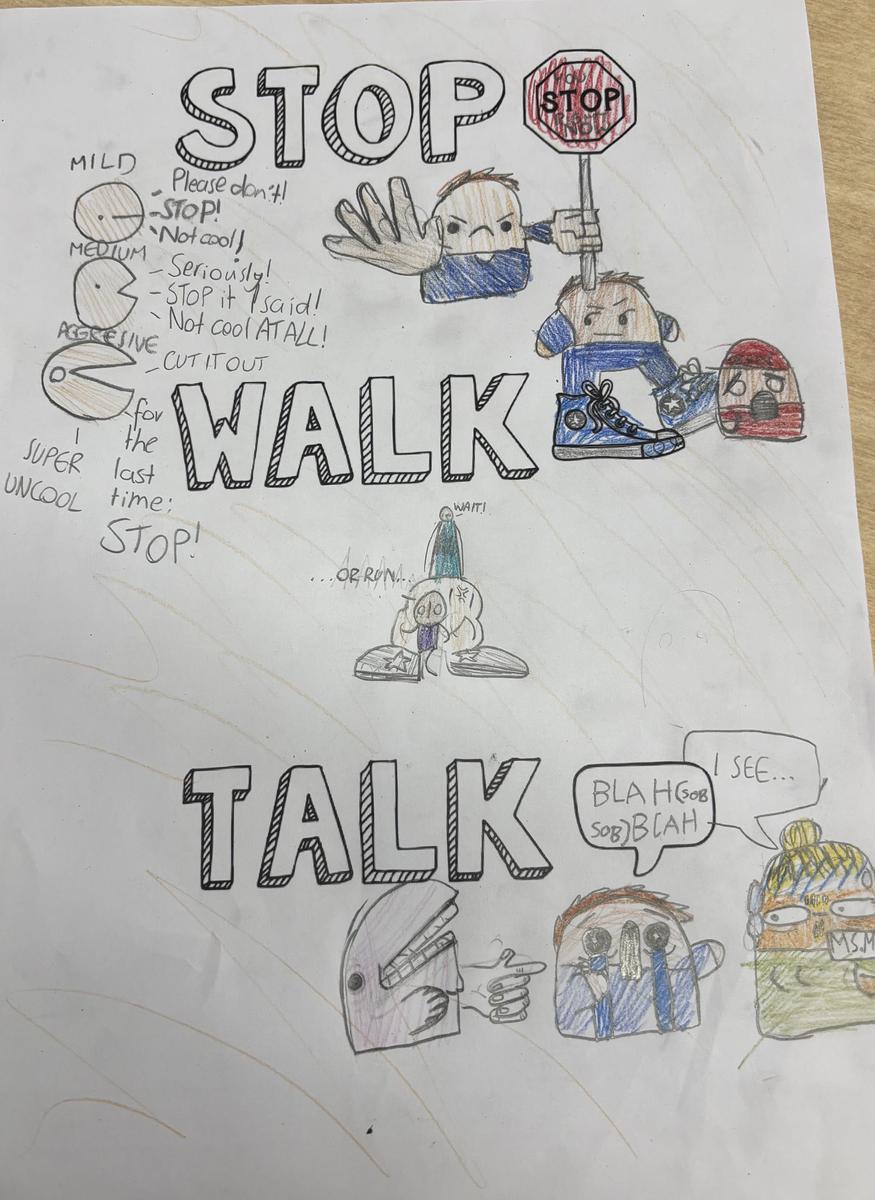
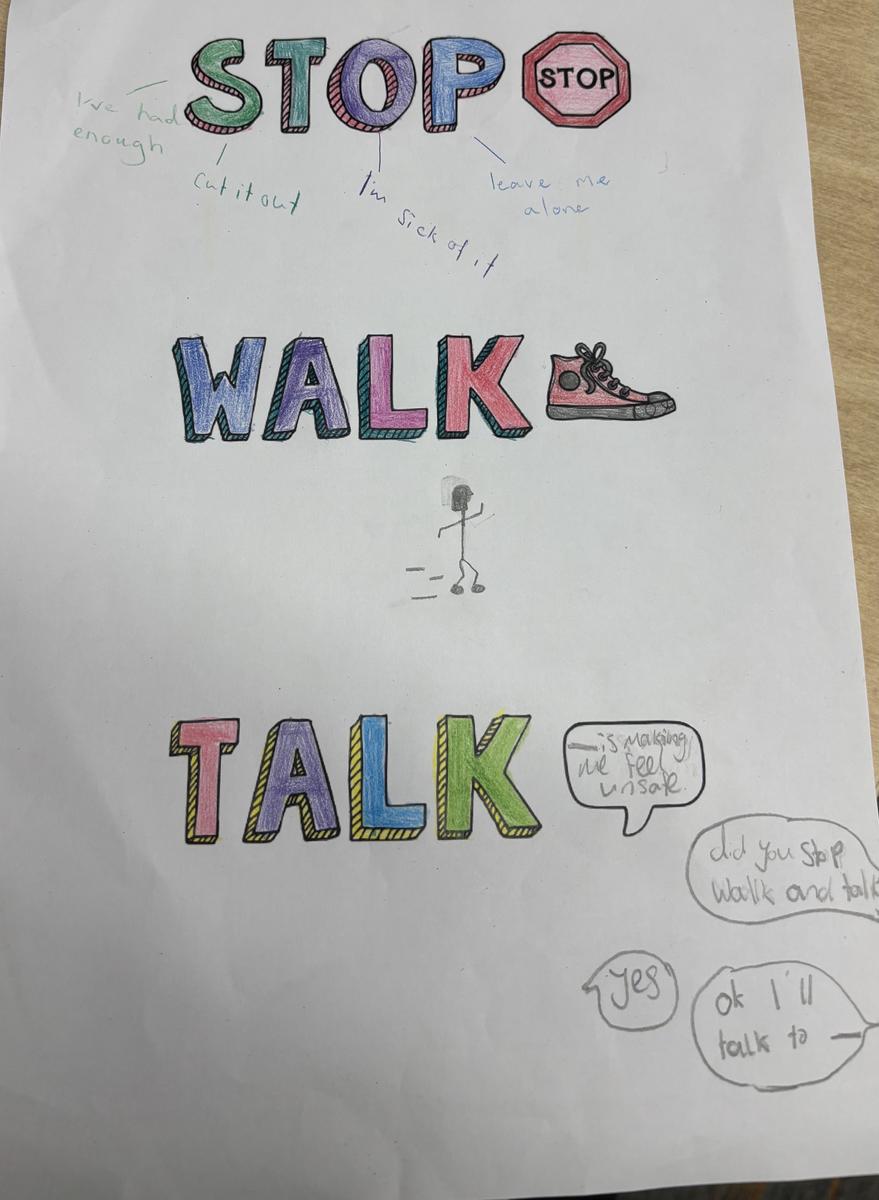
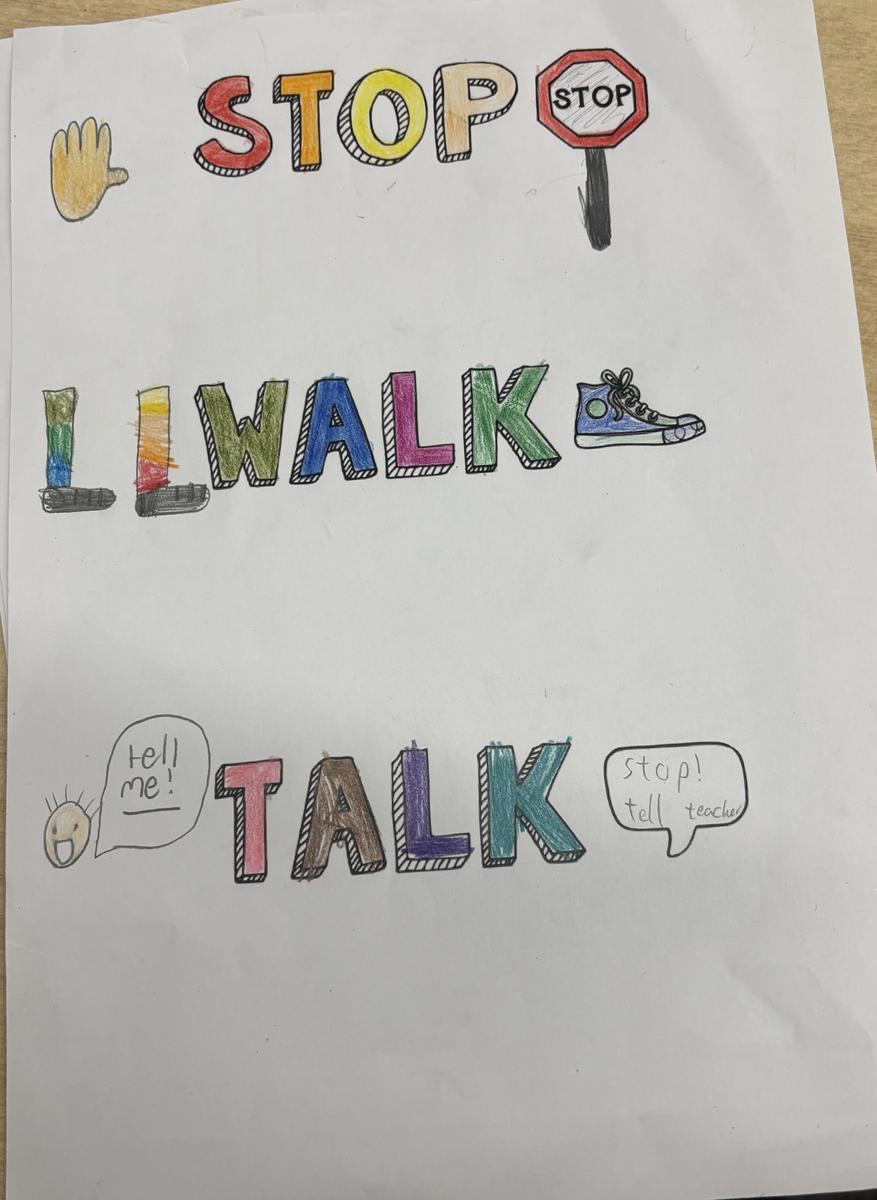



Lesson 4: How to respond when someone tells you to ‘stop’.
It is also important for students to know how to respond if/when someone ever asks them to “stop,” even when they don’t know or believe that they have done something disrespectful.
We teach students to:
In this lesson, we also explain how adults will respond when disrespectful behaviour is reported to them:
This could involve:
Lesson 5: Gossip and rude remarks.
In this lesson we revisit our SWPBS expectation of showing care and kindness to others to be respectful. We identify with students that rude remarks and talking about other people in a negative way is disrespectful behaviour.
Students practise using the Stop, Walk, Talk process with age appropriate scenarios involving rude remarks and/or gossip.
Lesson 6: Cyberbullying (for Grades 3 – 6).
We share the video from the eSafety Commissioner, and discuss as a class how we can use Stop, Walk, Talk online as well as in person.
Together, grades make a list of different ways they could ask someone to “stop” when on social media, or using the internet, and how to respond when someone says “stop” when online. Because we cannot necessarily walk away from social media, we can skip straight to Talk and encourage students to talk to a trusted adult when they see something disrespectful online.
As with any new topic of learning in the classroom, we continue to revisit and reteach these skills throughout the year and as needed.
To support this learning at home, you might:

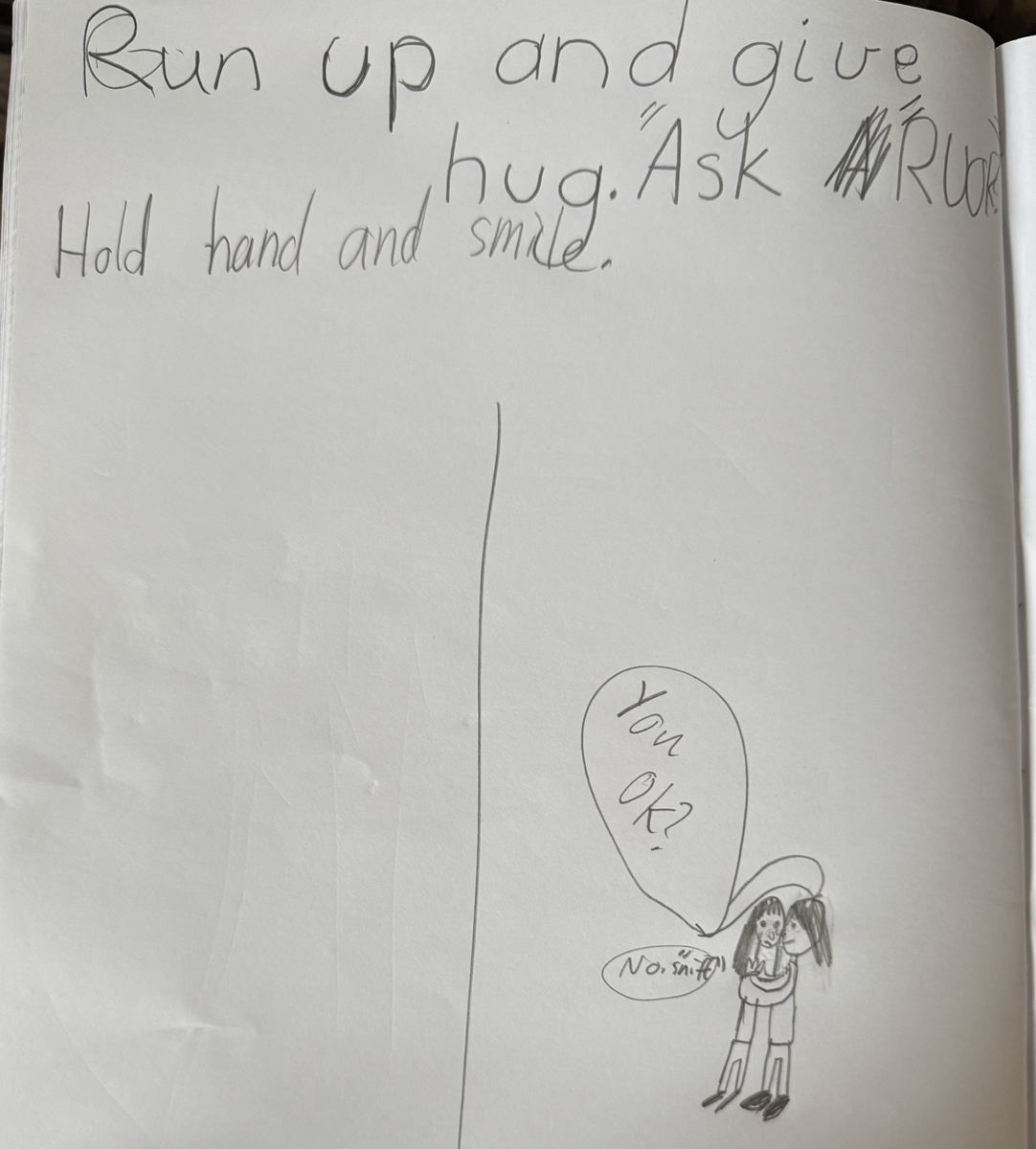
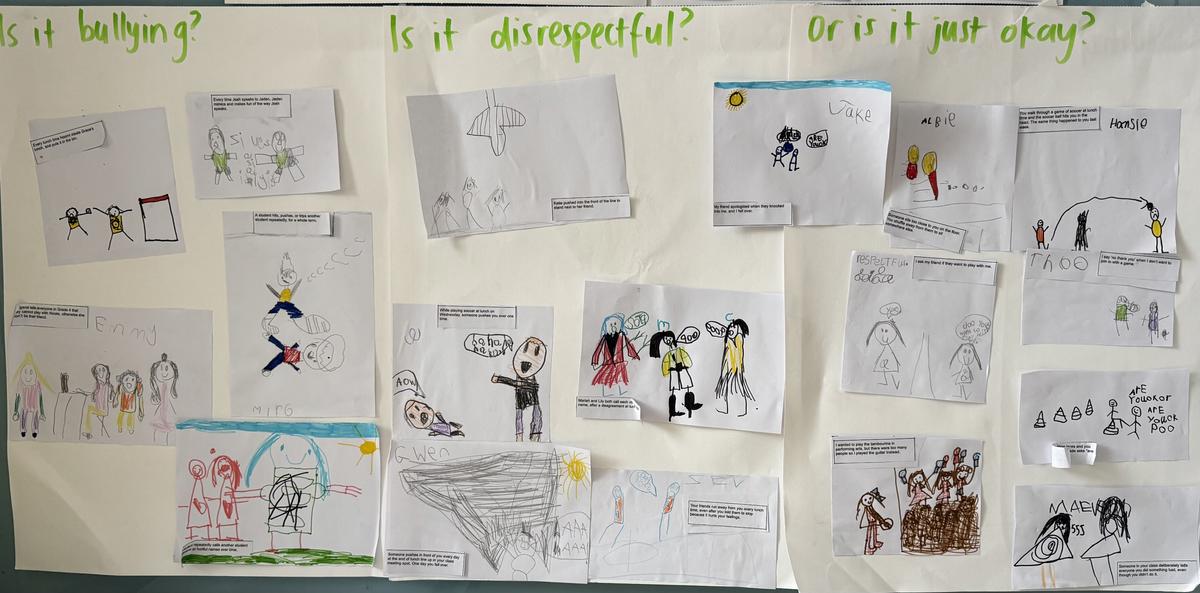
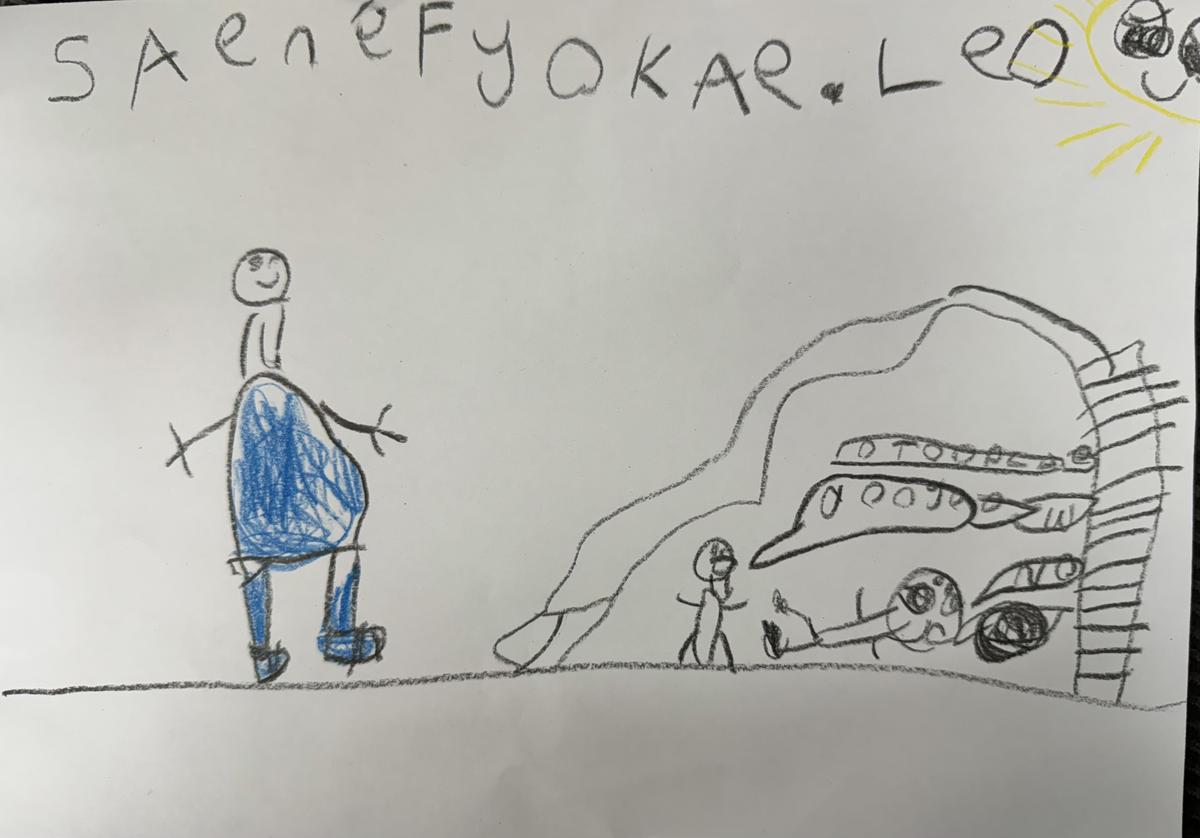
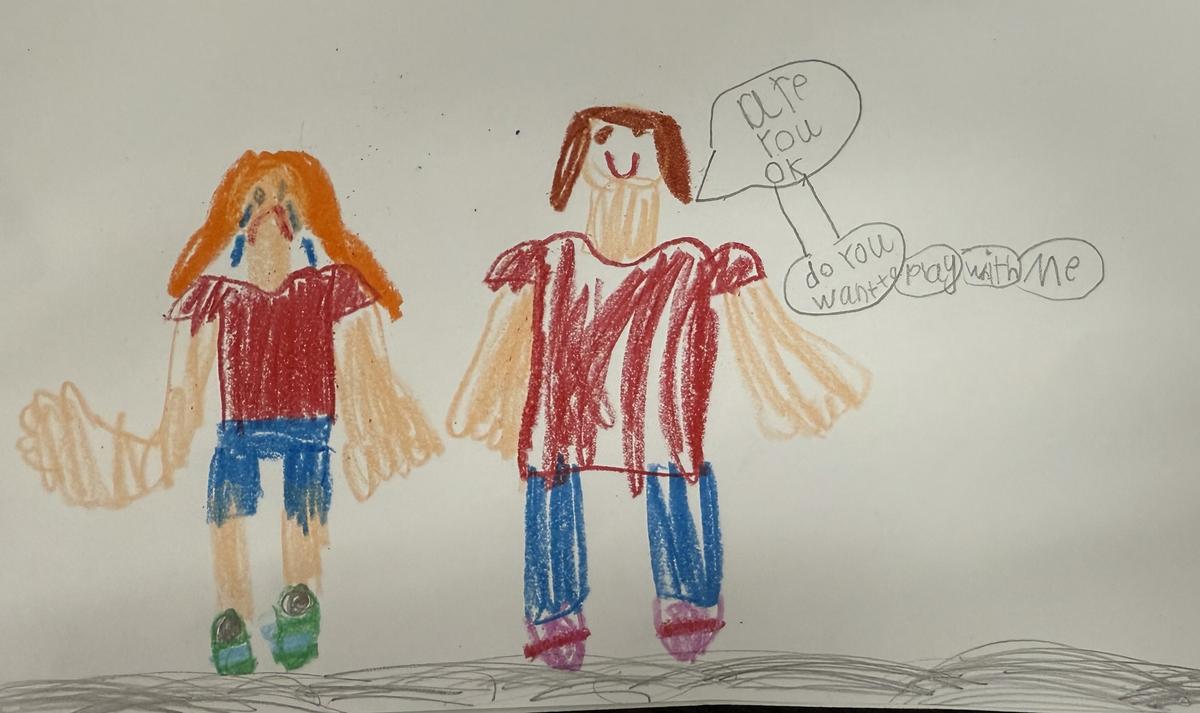









~ Grace Clark, Wellbeing Leading Teacher